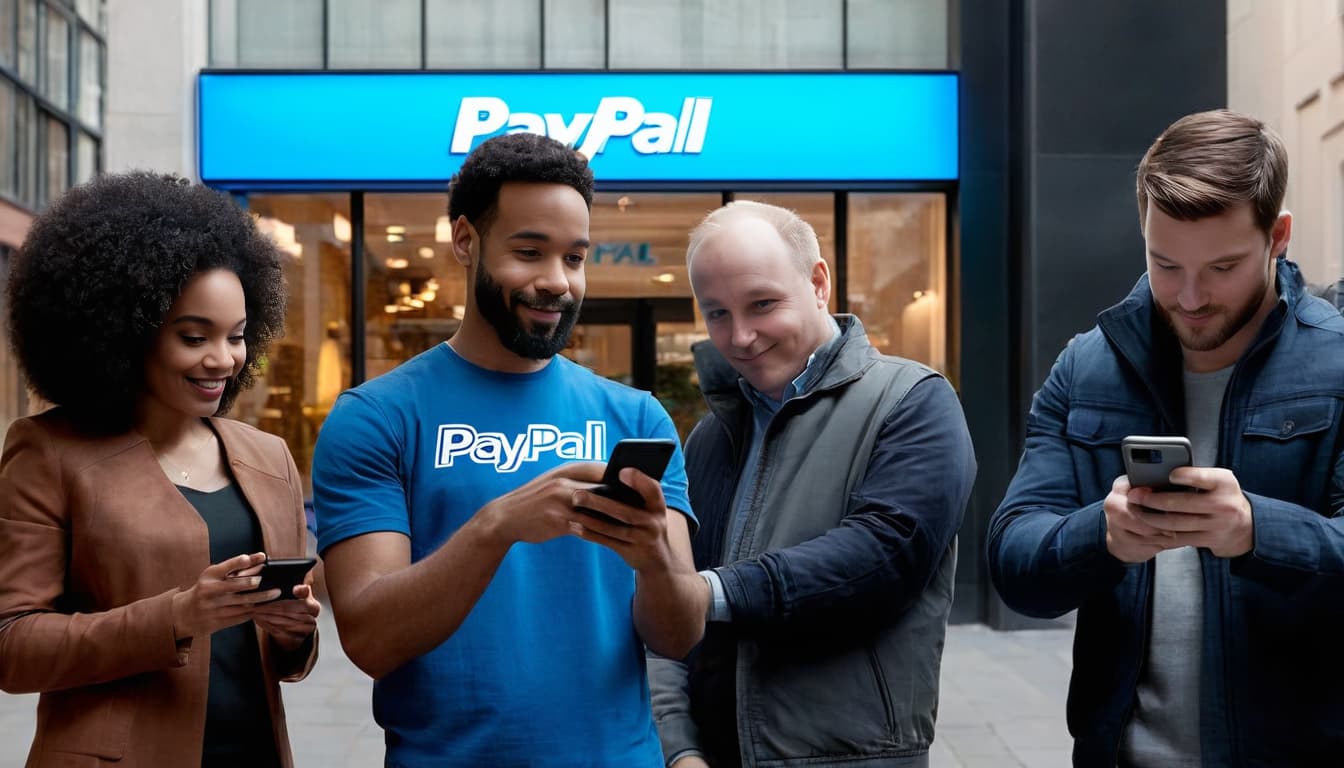When it comes to cashing a money order that’s already filled out, ensuring a smooth process involves a series of essential steps. Double-checking all details, selecting the right cashing location, preparing your identification, endorsing the money order, and being aware of any fees are crucial.
But what happens next? Well, understanding the timing, considering various cashing options, and safeguarding your receipt play key roles in the successful completion of the transaction. By following these steps meticulously, you can navigate the process effectively and secure your cash.
Verify Information on the Money Order
Before proceeding to cash a filled-out money order, make sure to thoroughly verify all the details on the money order for accuracy and security. Start by checking the recipient’s name and the amount specified on the money order to ensure they align with your expectations. Additionally, it’s crucial to verify that the sender’s details match the information provided on the money order. This step is vital for security purposes and helps in confirming the legitimacy of the money order, safeguarding you against potential scams.
Furthermore, it’s essential to confirm that the name on the money order matches the identification you’ll be presenting when cashing it. Ensuring this alignment will facilitate a smooth transaction process. Lastly, double-check the security features on the money order, such as watermarks or specific paper quality, to protect yourself from falling victim to any fraudulent activities.
Find Suitable Cashing Location for Cashing Your Money Order
When looking for a suitable cashing location for your filled-out money order, consider exploring nearby banks, check cashing stores, and even visiting the post office.
Evaluate the convenience, fees, and operating hours of each location to find the best fit for your needs. Remember to check for any specific requirements or limits the cashing locations may have.
Locate Nearby Banks
To find a suitable location for cashing your filled-out money order, consider checking nearby banks, which commonly offer secure and reliable services for this transaction. Many banks allow account holders to cash money orders without charging a fee, but there may be restrictions or fees for non-account holders.
Before heading to the bank, verify their specific policies on cashing money orders. Remember to bring a valid ID as it’s typically required for this transaction. Additionally, banks may have limits on the amount of the money order that can be cashed, so it’s essential to inquire about any such restrictions beforehand.
Check Cashing Stores
Consider utilizing check cashing stores as a practical option for cashing your filled-out money order efficiently and conveniently. These establishments offer convenient locations and extended operating hours, making them a reliable option, especially for individuals without bank accounts. You can also look for instant online check cashing options as well that may work for your money order cashing needs.
Visit Post Office
If you’ve been considering the convenience of check cashing stores for cashing your filled-out money order, another reliable option is visiting a nearby post office for hassle-free and secure money order cashing.
When it comes to cashing a money order, the post office offers several advantages:
- Free Service: The U.S. Postal Service cashes USPS money orders for free.
- Secure and Reliable: Post offices are secure and reliable locations for cashing money orders.
- Efficient Cash Transactions: USPS provides efficient services for cashing money orders, making it a convenient option for you.
Next time you need to cash a USPS money order, consider heading to your local post office for a seamless and trustworthy experience.
Timing Your Money Order Cashing
For efficient processing, time your cashing of the money order based on the location’s operating hours and cash availability. Cashing a money order promptly is crucial to prevent fraud and ensure swift access to funds. Some places may impose restrictions, such as expiration dates, on when you can cash a money order. It’s essential to plan ahead and select a convenient time to streamline the process.
Before heading to cash the money order, verify the timing requirements and any associated fees. Different locations may have varying policies regarding cashing money orders, so it’s important to be aware of these details. By understanding the timing constraints and availability of cash, you can avoid unnecessary delays and ensure a smooth transaction.
Stay informed about the verification process as well to make the cashing experience as seamless as possible. Timing is key when it comes to cashing a money order, so be proactive and strategic in your approach.
Provide Necessary Identification and Endorse
To cash a money order, make sure you bring a valid form of identification, such as a driver’s license or passport, and endorse the money order by signing the back. Proper identification and endorsement are crucial steps in the process to ensure a successful transaction.
Here are some key points to consider:
- Valid Identification: Having a government-issued ID like a driver’s license or passport helps verify your identity as the rightful recipient of the money order.
- Endorsement: Endorsing the money order by signing on the back is essential to authorize the deposit or collection of funds. Without proper endorsement, the transaction may not be processed.
- Authorization: Your signature on the back of the money order acts as authorization for the financial institution to release the funds to you. This step is necessary to complete the transaction securely and efficiently.
Pay Service Fees and Collect Cash
When cashing a filled-out money order, you’ll need to pay the service fee upfront, typically ranging from $1 to $10.
Make sure to inquire about any maximum limits on cashing amounts and additional fees for immediate access to the funds.
Once the service fee is settled, you can proceed to collect your cash following the fee structure breakdown.
Service Fee Payment Process
When you cash a filled-out money order, remember to inquire about and be prepared to pay the applicable service fee, which can range from $1 to $10 depending on the location and amount. Here are some key points to consider:
- Service Fee Variability: Service fees for cashing money orders can differ based on the location and the amount of the money order.
- Bank Account Holders: Some banks waive cashing fees for their account holders, offering a potential cost-saving opportunity.
- Retail Locations vs. Check-Cashing Stores: Retail locations like Walmart or convenience stores may charge lower fees compared to specialized check-cashing stores.
Always remember to ask about the specific service fees upfront to avoid any surprises and ensure a smooth cashing process.
Cash Collection Procedure
As you approach the cash collection procedure for your filled-out money order, keep in mind the necessity of paying the service fees to collect your cash smoothly.
When you present your filled-out money order, along with a valid ID like a driver’s license, at banks and check-cashing stores, they’ll verify your identity and ask you to sign the back of the money order.
Be prepared for the institution to charge a fee to cash the money order, which will be deducted from the total amount. Ensure your name on the money order matches your ID.
Once all requirements are met, you’ll receive the remaining cash amount. Remember, different locations may have varying fee structures, so it’s essential to inquire about the specific fees before proceeding.
Fee Structure Breakdown
To understand the breakdown of service fees for cashing a money order, you can expect varying charges depending on the cashing location. Here’s what you need to know:
- Check-Cashing Stores: Fees typically range from $1 to $10 or may be a percentage of the money order amount.
- Banks: Some banks waive fees for their account holders, while others may charge a nominal fee for non-account holders.
- Retail Locations: Places like Walmart may charge a flat fee usually between $3 to $6 for cashing money orders.
When choosing where to cash your money order, consider factors such as convenience, cost-effectiveness, and any potential fee structures in place at the different cashing locations.
Notify Sender of Successful Cashing
After successfully cashing a filled-out money order, promptly notify the sender to confirm the transaction. Notifying the sender that you have successfully cashed their money order is essential for maintaining good communication and transparency in financial transactions.
It’s recommended to provide an update to the sender, acknowledging the completion of the transaction. This prompt communication demonstrates professionalism and trustworthiness on your part. By keeping the sender informed of the cashing process, you’re ensuring a transparent and efficient exchange of funds.
Frequently Asked Questions
How Do I Cash a Money Order That I Already Filled Out?
To cash a money order you filled out, endorse it with your signature and ensure the recipient’s name matches your ID. Take it to a bank, credit union, or retail store, pay any fees, and follow the process with proper ID.
How Do I Cash a Money Order That I Made Out to Someone Else?
To cash a money order made out to someone else, have them endorse it on the back. Then, they can cash it with their ID. Ensure they sign it before cashing. Confirm if third-party cashing is allowed per the money order’s terms.
Can I Cash Out a Money Order I Made?
Yes, you can cash out a money order you made. Ensure recipient’s name matches your ID, sign the back, verify details, and be ready for fees. Double-check everything for smooth cashing process.
How Do I Cash a Returned Money Order?
To cash a returned money order, contact the issuer directly for their specific process. Have the original receipt and proper ID ready. Keep records of all interactions for reference. Act promptly for a swift resolution.
Conclusion
Now that you’ve successfully cashed your money order, be sure to keep your receipt safe and notify the sender of the transaction.
By following these steps and being prepared, you can easily turn your money order into cash without any hassle.
Remember to double-check all information, bring proper identification, and choose the right location for a smooth and efficient process.
Enjoy your cash!



